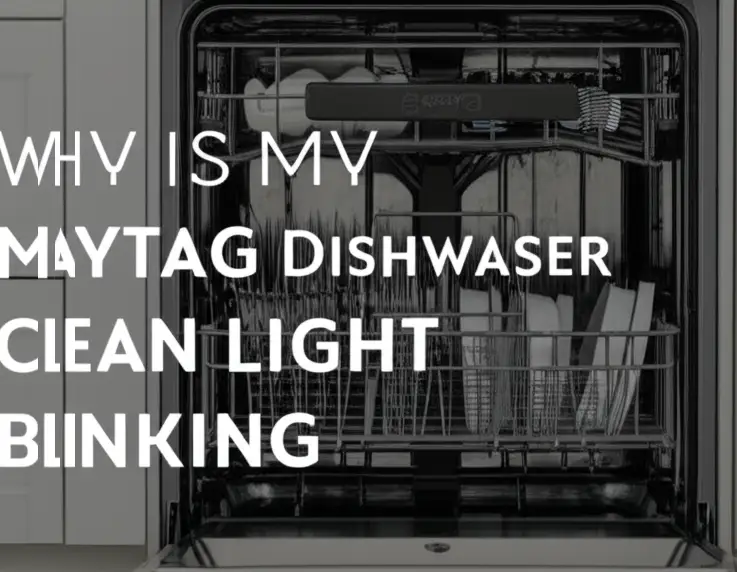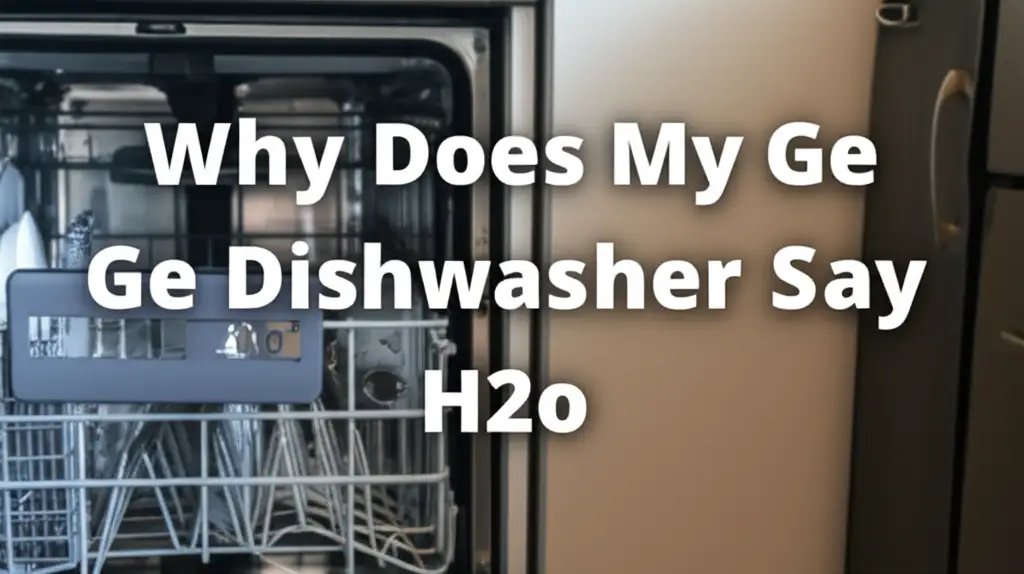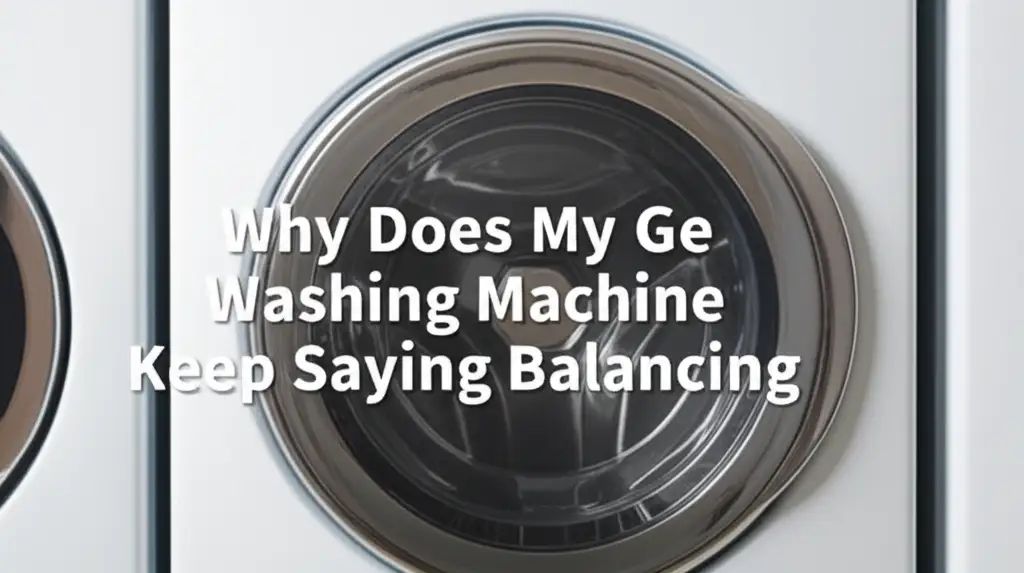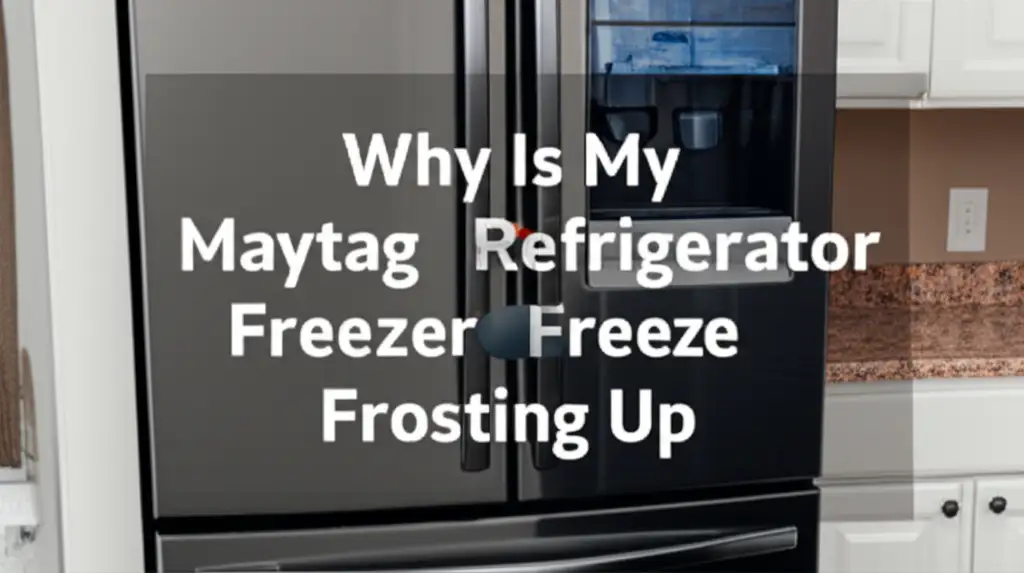· Katria Melrose · Appliance Troubleshooting · 21 min read
Why Is My Ge Washing Machine Lid Not Locking
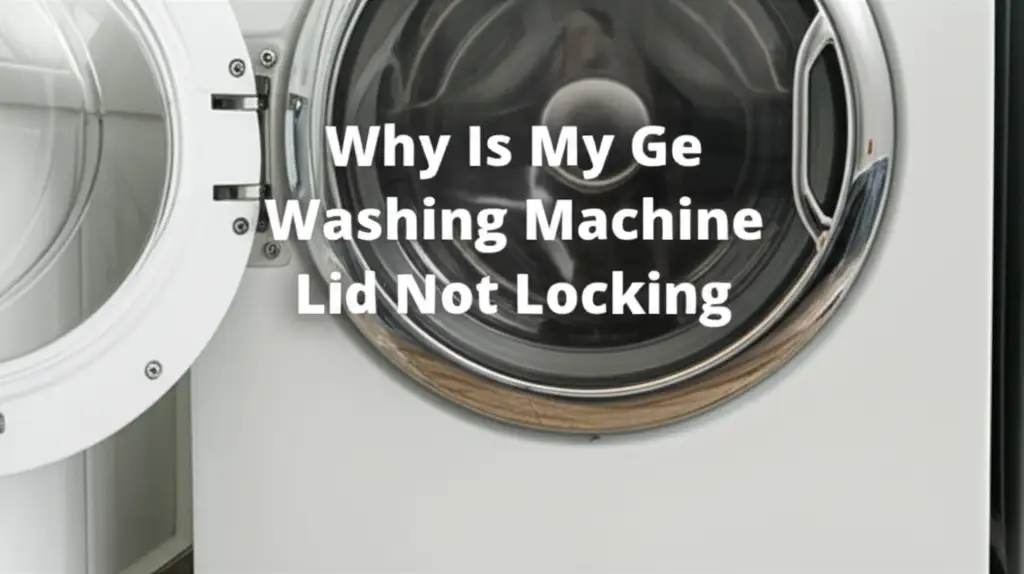
Why Is My GE Washing Machine Lid Not Locking? Troubleshooting Guide
Imagine loading your clothes, adding detergent, and pressing start. Nothing happens. Your GE washing machine lid is not locking, and the cycle refuses to begin. This is a common and frustrating problem for many homeowners. A non-locking lid prevents your washer from operating, as it is a crucial safety mechanism. You might be wondering why your reliable GE washer is suddenly failing you.
This issue can stem from various sources, from a simple misalignment to a faulty internal component. Understanding the function of the lid lock and its common failure points is key to diagnosing the problem. I will walk you through the most frequent causes. This guide offers clear, actionable steps. It helps you troubleshoot and fix your GE washing machine lid not locking issue. We cover everything from quick fixes to identifying parts needing replacement.
Takeaway
- Reset your washer: A simple power cycle can resolve temporary glitches.
- Inspect the lid switch: This is often the main culprit; check for damage or blockages.
- Examine the strike plate: Ensure it aligns correctly with the lid lock assembly.
- Check error codes: Your washer’s display might offer clues about the issue.
- Consider professional help: For electrical or control board issues, professional assistance is often best.
Your GE washing machine lid is not locking primarily due to a faulty lid switch assembly, a misaligned lid strike, or issues with the main control board. Less common reasons include power supply problems, drain system clogs, or specific error codes preventing the cycle from starting for safety.
Understanding Your GE Washer’s Lid Lock System
Your GE washing machine relies on a lid lock mechanism for safe and efficient operation. This system ensures the washer lid remains securely closed during agitation and spin cycles. The lid lock is a crucial safety feature. It prevents users from opening the lid while the drum is spinning at high speeds. This protects hands or objects from injury. When the lid fails to lock, the washer’s internal safety protocols stop the cycle from starting. This is why you cannot begin a wash.
The lid lock system usually consists of several key components. The main part is the lid switch assembly, which includes a sensor and a locking mechanism. When you close the lid, a “strike” or “latch” on the lid engages with this switch. The switch then sends a signal to the washer’s main control board. This signal tells the board that the lid is closed and secure. Only after this signal is received does the control board allow the wash cycle to proceed. Without a proper lock signal, the washer remains idle. Understanding these parts helps you diagnose why your GE washing machine lid is not locking.
The system also integrates with other parts of the washer’s cycle. For instance, some models require the washer to successfully drain before unlocking the lid after a cycle. If the machine cannot drain, the lid might remain locked, or refuse to lock for the next cycle. This interaction ensures the machine functions safely at all times. A problem in any part of this sequence can prevent the lid from locking. Recognizing the purpose of each component guides your troubleshooting efforts.
Common Culprits: Why Your GE Washer Lid Won’t Lock
Several issues can cause your GE washing machine lid not locking problem. Identifying the correct culprit saves you time and effort. I will describe the most frequent reasons. This helps you narrow down your search. We will start with simple checks and move to more complex ones.
One common reason is a power supply issue or a temporary glitch. Like many modern appliances, your GE washer can sometimes experience electronic hiccups. These small errors might prevent the lid lock from engaging. This is often the easiest problem to fix. It does not require special tools or skills. I always suggest starting here.
A faulty lid switch assembly is another very frequent cause. The lid switch is a mechanical and electrical part. It has moving parts that can wear out over time. It also contains electrical contacts that can fail. If the switch cannot detect that the lid is closed or if it cannot engage its locking mechanism, the washer will not start. Damage to the switch body or its wiring can also lead to failure. This component directly controls the lid lock function.
Misalignment or damage to the lid strike plate is also a possibility. The strike plate is a small piece, usually plastic or metal, attached to the lid itself. It fits into the lid switch assembly when the lid closes. If this strike plate is bent, broken, or simply not aligned correctly, it cannot properly activate the lid switch. This prevents the lid from locking. Small plastic pieces can break off, stopping the full engagement.
Finally, issues with the main control board can cause the lid not to lock. The control board is the brain of your washing machine. It receives signals from the lid switch and sends commands to the lid lock mechanism. If the board malfunctions, it might not correctly interpret the lid status. It might also fail to send the lock signal. While less common than a faulty lid switch, a bad control board can be a significant problem. It often requires professional diagnosis. Your washer may also display error codes when the control board has issues.
Troubleshooting the Lid Switch Assembly
The lid switch assembly is often the primary reason your GE washing machine lid is not locking. This component acts as a safety interlock. It ensures the machine only operates when the lid is securely closed. When this switch malfunctions, the washer will not receive the correct signal to begin a cycle. I will guide you through inspecting and testing this vital part.
First, always disconnect power to your washer before you begin any inspection. Unplug the machine from the wall outlet. This is a crucial safety step to prevent electrical shock. Once power is off, locate the lid switch assembly. On most GE top-loading washers, it sits near the front of the lid opening. It is usually mounted to the washer’s main frame. The lid strike on the actual lid slides into this part.
Carefully examine the lid switch assembly for visible damage. Look for cracks, broken plastic pieces, or bent metal parts. Sometimes, lint, debris, or dried detergent can accumulate in the switch opening. This debris might prevent the strike from fully engaging. Clean out any obstructions you find using a small brush or a dry cloth. Make sure the pathway for the strike is clear. You can often see the lock mechanism moving inside the assembly. Ensure it moves freely without sticking.
If there is no visible damage, you might need to test the switch’s electrical continuity. This requires a multimeter. Set the multimeter to the continuity or ohms setting. Disconnect the electrical connectors from the lid switch. Place the multimeter probes on the terminals of the switch. Refer to your washer’s service manual for the exact terminals to test. The switch should show continuity when the lid is “closed” (simulated by pushing in the actuator) and open when the lid is “open.” If the switch does not change state, it is likely faulty. This indicates a need for replacement. Many online guides and videos show how to use a multimeter for this test.
Replacing a faulty lid switch is a common DIY repair. You can usually find replacement parts online or at appliance parts stores. Make sure you get the correct part number for your specific GE washer model. Installation generally involves unscrewing the old switch, disconnecting the wires, and installing the new one in reverse order. This step often fixes the “GE washing machine lid not locking” issue. Remember, patience and care are important during this repair. If you are not comfortable with electrical testing, consider calling a professional. You can find more information about tackling appliance repairs yourself at Do-It-Yourself Washing Machine.
Checking the Strike Plate and Hinge Alignment
When your GE washing machine lid is not locking, the problem might not be the electrical components. Sometimes, mechanical issues prevent proper engagement. The strike plate and lid hinges play a crucial role in this process. I will show you how to inspect these parts. This often involves simple visual checks and minor adjustments.
Begin by unplugging your GE washing machine from the power outlet. Safety first is always important. Once the power is off, open the washer lid fully. Look at the strike plate. This is the small piece, typically plastic or metal, attached to the underside of the lid. It is designed to slide into the lid lock assembly on the washer’s frame. Check the strike plate for any signs of physical damage. Look for cracks, chips, or bends. If it is broken, it cannot properly activate the lid switch. A broken strike plate usually requires replacement.
Next, check the alignment of the strike plate with the lid lock assembly. Close the lid slowly and observe how the strike plate enters the opening. Does it slide in smoothly? Or does it seem to hit an edge, or miss the opening slightly? Even a slight misalignment can prevent the lid from locking. This misalignment can be due to loosened screws on the strike plate. It can also happen if the washer’s top panel has shifted. You might need a flashlight to see clearly inside the strike plate opening.
Examine the lid hinges. These are the metal components that allow the lid to open and close. Worn, bent, or loose hinges can cause the lid to sit improperly on the washer frame. This mispositioning can throw off the alignment of the strike plate. If the hinges are loose, gently try to wiggle the lid. Excessive play indicates loose or damaged hinges. You can try tightening the screws that secure the hinges to the washer body. Be careful not to overtighten them. If the hinges are bent, they might need professional straightening or replacement.
Sometimes, the entire top panel of the washer can shift slightly. This slight shift is enough to misalign the lid and its strike plate. Check if the top panel appears level and securely attached. If it seems loose, you might need to re-secure the panel mounting screws. These are usually located under the control panel or on the sides of the machine. Ensuring the lid closes flush and the strike plate aligns perfectly with the lid lock assembly is key. Addressing these mechanical issues can often resolve your “GE washing machine lid not locking” problem without needing electrical parts.
Addressing Control Board and Electrical Issues
When your GE washing machine lid is not locking, and you have ruled out the lid switch and strike plate, the issue might lie deeper. It could be related to the washer’s main control board or its electrical wiring. These are more complex problems. They often require careful diagnosis. I will explain how these components can affect the lid lock and what steps you can take.
The main control board acts as the brain of your GE washing machine. It receives signals from all sensors, including the lid switch. It then sends commands to different components, such as the lid lock mechanism. If the control board malfunctions, it might not properly interpret the signal from the lid switch. It could also fail to send the command for the lid lock to engage. This can leave you with a washer that simply will not start its cycle. Sometimes, a temporary power surge or outage can confuse the control board. A simple reset often helps resolve these minor glitches.
To reset your GE washer, unplug it from the wall outlet. Wait for about 5-10 minutes. This allows the control board to fully discharge any residual power and clear its memory. After the waiting period, plug the washer back in. Then, try to close the lid and start a new cycle. This simple step can sometimes fix the “GE washing machine lid not locking” problem if it was caused by a minor electronic hiccup. If the problem persists, the board might have a more serious internal fault.
Inspect the wiring connected to the lid lock assembly and the control board. Frayed, disconnected, or corroded wires can disrupt the electrical signals. This prevents the lid lock from receiving power or the control board from receiving feedback. Always disconnect power before inspecting wiring. Carefully check each wire connection for tightness and corrosion. If you find loose wires, gently push them back into place. If wires appear damaged, they might need replacement or repair. However, wiring repairs can be tricky and may require specific tools.
If you suspect the main control board is faulty, it is often best to consult a professional. Testing a control board requires specialized knowledge and equipment. Replacing a control board can also be expensive. Before replacing it, ensure all other potential issues are ruled out. A faulty control board might also cause other symptoms. For example, the washer may not fill with water, or it may not drain. These related issues can point to a deeper control board problem. Sometimes, the washer will display an error code on its digital screen. This code can help diagnose control board issues. If your washer is not filling, you might find help at Why Is My GE Washing Machine Not Filling Up With Water.
When to Call a Professional: Repair vs. Replacement
You have tried all the troubleshooting steps, and your GE washing machine lid is still not locking. At this point, you face a decision: repair it yourself, call a professional, or consider replacing the machine. Making the right choice depends on the complexity of the issue, your comfort level with repairs, and the age of your appliance. I will help you evaluate your options.
Deciding to call a professional is wise when you encounter complex electrical issues. Problems involving the main control board, internal wiring, or motors are often best handled by trained technicians. These components can be expensive to replace. Incorrect installation can cause further damage. If you are not comfortable using a multimeter, or if the repair seems beyond your skill level, a professional can diagnose and fix the issue safely. They have the right tools and expertise. Remember, safety always comes first when dealing with appliances.
Consider the cost of repair versus replacement. Get a quote for the repair from a professional. Compare this cost to the price of a new GE washing machine. If the repair cost is more than 50% of the price of a new, comparable machine, replacement might be a better option. Also, consider the age of your current washer. If your GE washer is older than 8-10 years, other components might start failing soon. Investing heavily in an old appliance might not be cost-effective in the long run. New washing machines also offer better energy efficiency.
There are situations where replacement makes more sense than repair. If your GE washing machine has multiple issues, not just the lid lock, it may be time for a new one. For instance, if your washer is also making strange noises, leaking water, or having draining problems, these combined issues point to a machine reaching the end of its lifespan. Repairing one part might only lead to another failure soon after. A new appliance offers peace of mind and often comes with a warranty. If your GE washer is leaking, you can find information at Why Is My GE Washing Machine Leaking From The Bottom.
Finally, weigh your time and effort. While DIY repairs can save money, they can also take a lot of time. If you do not have the time or patience for a detailed repair, a professional can complete the job quickly. If you decide to replace your machine, research new models. Look for features that fit your laundry needs. Many appliance stores offer delivery and installation services. This makes the transition smooth and easy.
Maintenance Tips to Prevent Future Lid Lock Problems
Preventing issues with your GE washing machine lid lock can save you time and frustration. Regular maintenance helps keep your appliance running smoothly. I will share some practical tips. These steps focus on the lid area and overall washer health. They can reduce the chances of your GE washing machine lid not locking in the future.
First, keep the area around the lid lock assembly clean. Lint, dust, and detergent residue can build up over time. This debris can interfere with the proper function of the lid switch and strike plate. Use a damp cloth to wipe down the underside of the lid and the rim of the washer opening regularly. Pay close attention to the opening where the lid strike enters. Make sure no small objects or fabric pieces get stuck there. This simple cleaning prevents obstructions. For general cleaning tips, see How To Clean GE Washing Machine.
Avoid slamming the washer lid shut. While GE washer lids are designed to be durable, repeated harsh closing can stress the hinges and the lid lock mechanism. Over time, this can cause components to bend or break. Gently lower the lid until it clicks into place. This small change in habit can significantly extend the life of your lid lock assembly. Teach family members to do the same.
Periodically check the lid hinges for tightness. Loose hinges can cause the lid to shift, leading to misalignment of the strike plate. Use a screwdriver to gently tighten any visible screws on the hinges. Do not overtighten them, as this can strip the screw threads. Just ensure they are snug. A stable lid ensures the strike plate consistently engages the lock. This helps prevent your GE washing machine lid from not locking due to misalignment.
Be mindful of overloading your washer. Overloading can cause the drum to become unbalanced during the spin cycle. This excessive vibration can strain the washer’s components, including the lid lock. It can also cause the washer to stop mid-cycle. Follow your washer’s capacity guidelines. Distribute laundry evenly in the drum. This reduces stress on the machine and its parts. An unbalanced load can also lead to other issues, like your washer not draining or spinning correctly. You can read more about this at Why Is My GE Washing Machine Not Draining And Spinning.
Finally, run a monthly cleaning cycle on your GE washer. Many modern GE washers have a self-clean or tub clean cycle. If yours does not, you can run a hot water cycle with a washing machine cleaner or white vinegar. This helps remove residue and buildup that can affect the washer’s performance. A clean washer runs more efficiently. It can also prevent debris from interfering with sensitive parts like the lid lock sensor. Regular cleaning is a cornerstone of good appliance maintenance.
Troubleshooting Error Codes and Advanced Issues
When your GE washing machine lid is not locking, the washer’s display panel might offer valuable clues. Modern GE appliances often show error codes when a problem occurs. These codes are specific messages. They tell you what part of the machine is malfunctioning. I will explain how to interpret these codes and discuss other advanced issues that can prevent the lid from locking.
First, if your GE washer has a digital display, check for any error codes. When the lid fails to lock, you might see a specific code appear. Common codes related to lid lock issues often start with “Ld” or “dL” for “lid” or “door lock.” For example, an F8 E1 or LId error might point directly to a lid lock failure. Consult your washer’s user manual to look up the meaning of any displayed code. The manual provides detailed descriptions of each code. It also often suggests troubleshooting steps specific to that error. Knowing the error code can speed up diagnosis significantly.
Sometimes, the washer might not display an explicit error code but simply refuses to start. This can happen if the machine’s internal diagnostics detect an issue that prevents safe operation. For instance, if the washer cannot properly drain water from a previous cycle, it might prevent a new cycle from starting. This is a safety feature. A full tub of water would spill if the lid could open freely during operation. Ensure your washer is completely empty of water. If it is not draining, that is a separate issue that must be fixed first.
Less common, but possible, are issues with the main circuit board’s software or firmware. Like computers, washing machines have internal software that controls their functions. Rarely, this software can glitch. This can lead to various problems, including the lid lock not engaging. These issues are difficult for a homeowner to diagnose or fix. They usually require a professional service technician. They may need to reset or reprogram the control board using specialized tools.
In some older GE models, the lid switch might not be the primary safety interlock. Instead, a timer control or another type of mechanical switch might be responsible for ensuring the lid is closed. If you have an older model, refer to its specific service manual. The manual will show diagrams of the internal components. It will also help you locate relevant parts. However, for most recent GE washers, the electronic lid lock assembly is the standard. Remember that a professional can always help if you are unsure about interpreting error codes or tackling complex internal issues.
FAQ Section
Q1: How do I reset the lid lock on my GE washing machine? A1: To reset your GE washing machine’s lid lock, first unplug the washer from the wall outlet. Wait for about 5 to 10 minutes for the control board to fully reset. Then, plug the washer back in. This power cycle can often clear minor electronic glitches affecting the lid lock mechanism. Try to start a new wash cycle after this reset.
Q2: Can I bypass the lid lock on my GE washing machine? A2: It is not recommended to bypass the lid lock on your GE washing machine. The lid lock is a critical safety feature. It prevents injuries by ensuring the lid remains closed during high-speed agitation and spin cycles. Bypassing it can pose a safety risk and may void your appliance’s warranty. Always repair the lid lock instead of bypassing it.
Q3: How much does it cost to replace a GE washing machine lid switch? A3: The cost to replace a GE washing machine lid switch can vary. The part itself typically costs between $50 and $150, depending on your specific model. If you hire a professional, labor costs can add another $100 to $250. DIY replacement can save on labor costs if you are comfortable with the repair.
Q4: Why does my GE washer say “Lid” or “dL” on the display? A4: If your GE washer displays “Lid” or “dL” (door lock), it indicates a problem with the lid lock mechanism. This error means the washer senses that the lid is not securely closed or that the lid lock is faulty. You should inspect the lid for proper closure, check the lid strike, and examine the lid switch assembly for damage or debris.
Q5: How long do GE washing machine lid locks typically last? A5: GE washing machine lid locks typically last for 5 to 10 years, though this can vary. Factors like frequency of use, how gently the lid is closed, and proper maintenance can affect lifespan. Regular cleaning and avoiding slamming the lid can help extend its life.
Q6: Can a power outage affect my GE washer’s lid lock? A6: Yes, a power outage or a sudden power surge can sometimes affect your GE washer’s lid lock. It can cause the control board to glitch or misread the lid lock status. Performing a simple reset by unplugging the machine for a few minutes can often resolve issues caused by power interruptions.
Conclusion
Having your GE washing machine lid not locking can certainly disrupt your laundry routine. We have explored the most common reasons for this frustrating problem. We covered issues ranging from simple power glitches to more complex component failures. I showed you how to troubleshoot the lid switch assembly. We also checked the strike plate and lid alignment. We discussed electrical problems and the role of the main control board. We also looked at when it makes sense to call a professional.
Remember, safety is paramount. Always disconnect power to your washer before any inspection or repair. Many lid lock issues are simple fixes. A little bit of careful diagnosis can save you money on professional repairs. Regular maintenance, like keeping the lid area clean and avoiding slamming the lid, also helps prevent future problems. By understanding the components and their functions, you are well-equipped to tackle this common GE washing machine issue. If you face continued trouble, a qualified technician is always a good resource. Get your GE washer back to work and make laundry day smooth again!


